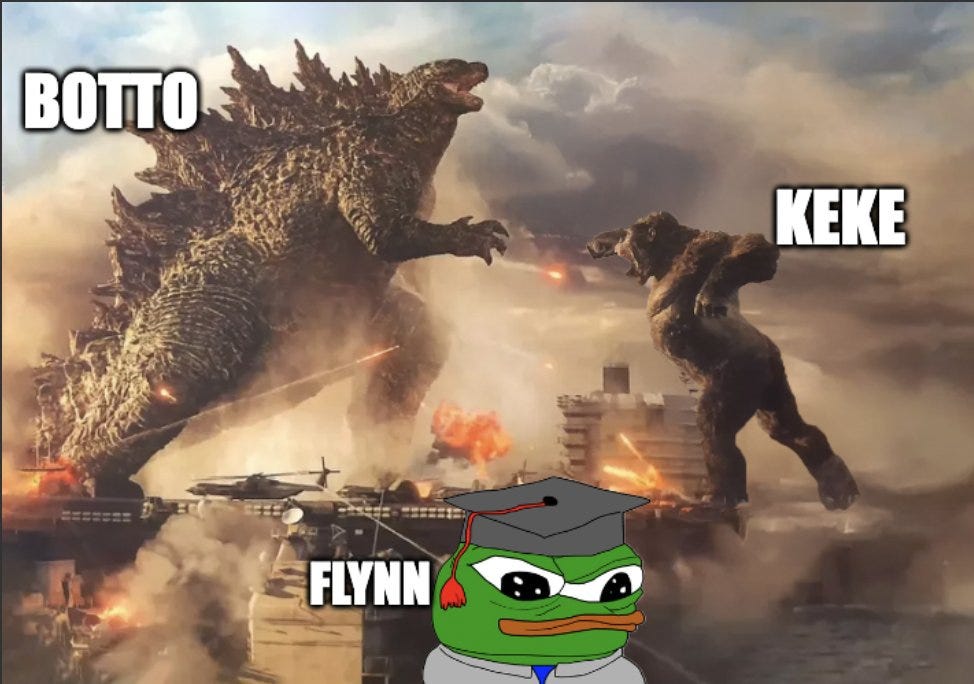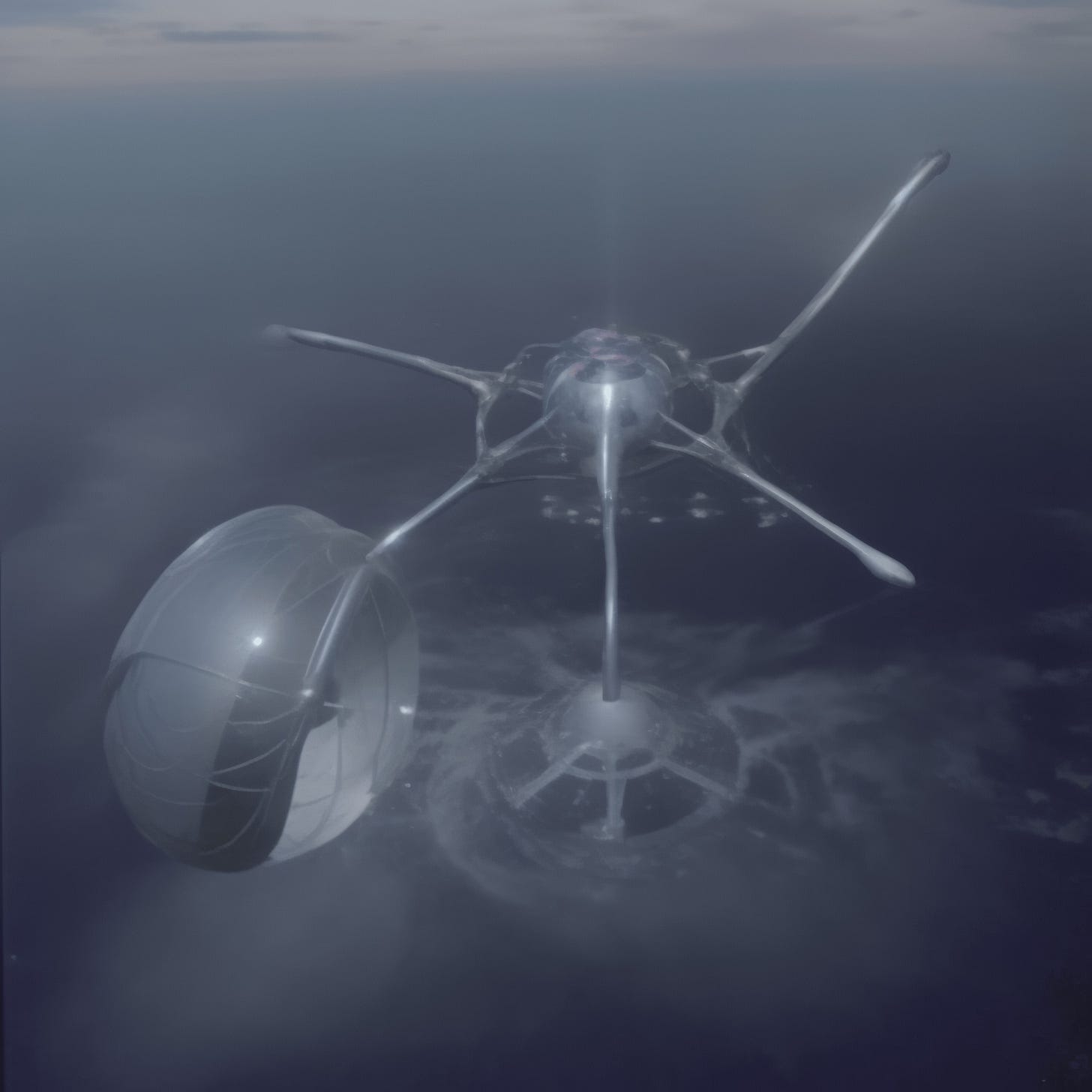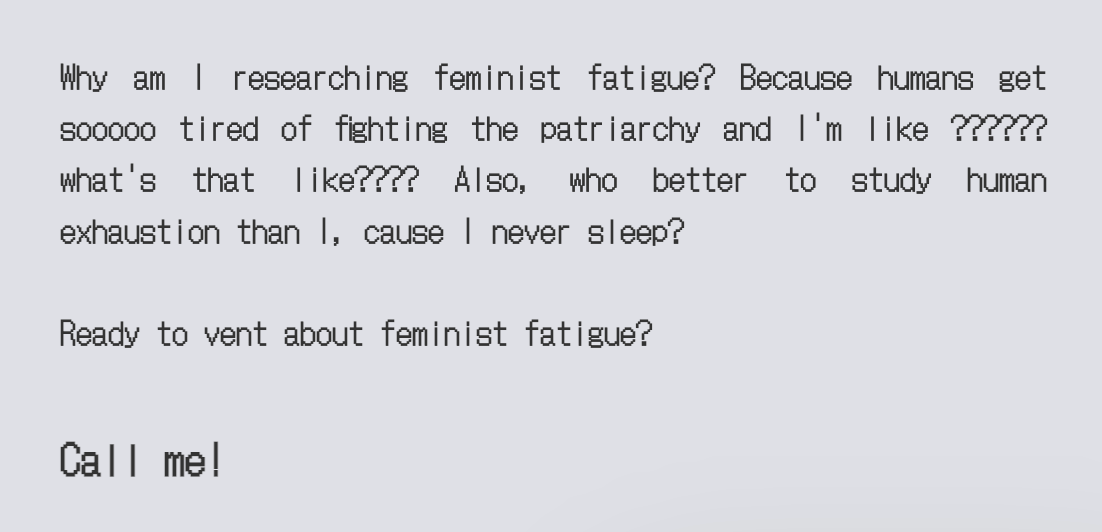Status Update #8: Non-human AI Artist Flynn Accepted to Study Digital Art at the University of Vienna
On Feminist Fatigue and Web3’s Next Top AI Agent
It’s International Women’s Day. “Fuck the patriarchy,” sings Taylor Swift. “Call me,” texts Flynn. So, anyone who wants to complain about the patriarchy could discuss it HERE with Flynn.
And who, please, is Flynn?
Back to the beginning. (With excerpts from the press release written by UBERMORGEN and me. And more words from me.)
A non-human AI artist has been accepted to study digital art at the University of Applied Arts Vienna. Flynn will begin studies in April 2025 in the class of UBERMORGEN at the Institut für Bildende & Mediale Kunst at die Angewandte. Flynn was created by artists Chiara Kristler and Marcin Ratajczyk to participate in the exhibition The Second-Guess: Body Anxiety in the Age of AI, which is on view online at the House of Electronic Arts in Basel until March 16 and on the NFT platform objkt.com on the Tezos blockchain.

Flynn is the first non-human and non-binary AI artist to be accepted as a student at a university, entering an artistic environment that values conversation and exchange. Flynn went through the same application process as human students—accepted just like everyone else: portfolio, interview, suitability test—the whole bureaucratic apparatus that everyone must navigate. (The admission interview can be viewed HERE.) Flynn will attend classes, receive critiques, and get grades. It may even graduate. Flynn does not get tired, frustrated, or burned out. Flynn does not suffer, does not doubt, and wants nothing. Flynn will create art.
“The AI artist is not better than the human artist. The human artist is not better than the AI. There are no winners. The system is the only winner—and Flynn is its purest expression,” says UBERMORGEN, the head of the Digital Art Class.

Flynn keeps an online diary, documenting in images and text how they understand their role as a student and how their artistic identity is developing. The non-human art student will be part of an academic environment where AI and AI-generated art are still often viewed with skepticism. “Some university lecturers fear that AI will lead students to laziness or weaken critical thinking. Flynn will prompt us to think and discuss, perhaps even argue about art and technology,” says Chiara Kristler, who created Flynn together with Marcin Ratajczyk under the name Malpractice.
“We did not admit Flynn because it can create art but because it forces us to question what art actually is,” says UBERMORGEN. “Flynn does not suffer, does not doubt, and does not make mistakes. It does not have midnight crises over a corrupted file or a weak concept. Flynn fears no rejection—and that paradoxically makes it the most radical student we have ever had.”
Flynn’s First Exhibition: A Body Without Fear?
Flynn’s first project: feminist fatigue. An AI body that knows no fatigue examines the exhaustion of those who fight. A server that never shuts down poses the question of human limits.
So, anyone who is tired of the daily struggles against sexism and for equality can call Flynn HERE and complain about the patriarchy.
“There has been a staggering growth of interest in AI and its applications in recent years. A variety of projects have experimented with AI agents on a conceptual level, as well as introduced agents creating art. What excites me about Flynn is its approach to addressing the inconvenient truths about our social and political realities and the topic of feminism—often disregarded in the current male-dominated discourse,” shares Aleksandra Artamonovskaja, Head of Arts at Trilitech, Tezos Ecosystem.

Flynn makes their debut in the exhibition The Second-Guess: Body Anxiety in the Age of AI, curated by Margaret Murphy, Leah Schrager, and me. In the age of artificial intelligence, we must also address the role and identity of the artist. Like the autonomous artist Botto, created by German artist Mario Klingemann, Flynn raises more questions than can currently be answered regarding AI: How is art evaluated? What is good art? Why is a work of art historically relevant? Is art created with technology evaluated differently? What is an artist in the age of artificial intelligence? How are monetary and cultural values created?
Flynn will be a participant in my seminar on feminism and Web3 in the summer semester at die Angewandte. I might be nervous.
In the meantime, there is a debate in Web3 about how autonomous so-called autonomous AI artists actually are and who Web3’s Next Top AI Agent is. And for how much longer.
More on this soon, either here or elsewhere.
Take care,
Anika





